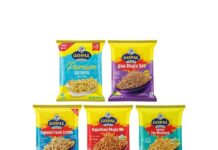
Currently, approximately 2.2 million tons of wheat are there at Indian ports or are in transit. However, according to a wheat dealer in Mumbai, the traders are backed by LCs for only about 400,000 tons.
The exports do not have any clue about what needs to be done with the remaining 1.8 million tons. Nobody expected that the government is going to ban exports overnight. One Mumbai-based trader told Business Standard that India’s ban on exports might force them to claim force majeure on the shipments to the overseas consumers.
Force majeure is the only way left
Wheat has already been purchased from traders and moved to the ports. The intention was to fulfill the commitments related to exports, but the government policy cannot be overruled. So, the only option left for the traders is to go for force majeure.
The Hindu mentions that purchasers from across the globe were banking on the supplies from the second-biggest wheat producer in the world, India, after the Black Sea region exports got plunged post the Russian invasion of Ukraine on 24 February.
The difficulties triggered by the ban
Importers like UAE, Indonesia, and Bangladesh may find it hard to look for alternative suppliers at the current heightening global prices.
As per the Business Standard, the sudden ban also might make things difficult for the exporters to sell their stocks lying profitably at the ports. Those cargos may need to be re-sold into a poor domestic market that is already under pressure after the emergence of the wheat-ban news. Besides, the traders also said that they would need to bear the transport and reloading costs.
About 1.4 million tons of wheat are stuck at present in the ports on the west coast like Kandla and Mundra or in transit. And about 8,00,000 tons are lying at Tuticorin, Kakinada, and Visakhapatnam in the east coast regions. At some ports, vessel loading has also stopped. Without any kind of clarity, thousands of trucks are eagerly waiting for the unloading to happen.
The ban also affected the global trading houses because, in a few transactions, the wheat was sold by the Indian subsidiaries to the regional headquarters in Singapore without securing the needful LCs.
The export demand and faith in government
The powerful export demand and assumption that the Indian government would support at least 8 m to 10 million tons shipments encouraged several exporters to move the cargo to ports after purchasing from the farmers.
All the trading houses wished to ship the maximum before June’s end because the movement of the crop becomes tough after the monsoon rainfall arrives. It was stated that the state government and the commerce ministry are with the exporters and helped them. The exports bough profits to the plates, and thus it was not expected that the government of India would do anything like that.
With a long history of the government displaying unplanned moves, the consequences of this sudden ban might also show its ugly face soon.
IndiFoodBev — authentic, impactful and influential
An English-language food and beverage processing and packaging industry B2B platform in print and web, IndiFoodBev is in its third year of publication. It is said that the Indian food and beverage industries represent approximately US$ 900 billion in revenues which implies more than 20% of the country’s GDP. Eliminating the wastage on the farmside can help to deliver more protein to a higher number of the population apart from generating sizable exports. The savings in soil, seeds, water, fertilizer, energy and ultimately food and nutrition could be the most immense contribution that country is poised to make to the moderation of climate change.
To improve your marketing and grow sales to the food and beverage processing and packaging industry, talk to us. Our research and consulting company IppStar [www.ippstar.org] can assess your potential and addressable markets in light of the competition. We can discuss marketing, communication, and sales strategies for market entry and growth.
Suppliers and service providers with a strategy and budget for targeted marketing can discuss using our hybrid print, web, video, and social media channels to create brand recognition linked to market relevance. Our technical writers are ready to meet you and your customers for content.
The second largest producer of fruit and vegetables in the world is continuously expanding processing capacities and delivery systems with appropriate innovative technologies. We cover product and consumer trends, nutrition, processing, research, equipment and packaging from farm to thali. Get our 2025 media kit and recalibrate your role in this dynamic market. Enhance your visibility and relevance to existing markets and turn potential customers into conversations. Ask for a sample copy of our bi-monthly in print or our weekly IndiFoodBev eZine each Wednesday.
For editorial info@ippgroup.in — for advertisement ads1@ippgroup.in and for subscriptions subscription@ippgroup.in
Naresh Khanna – 10 February 2025
Subscribe Now











